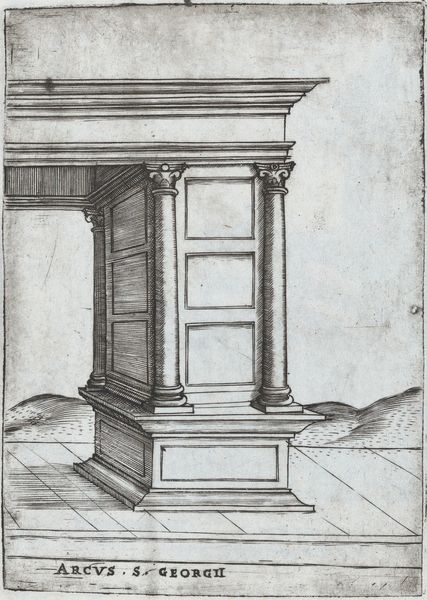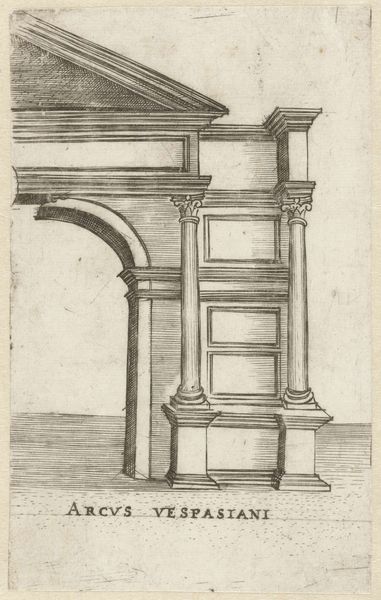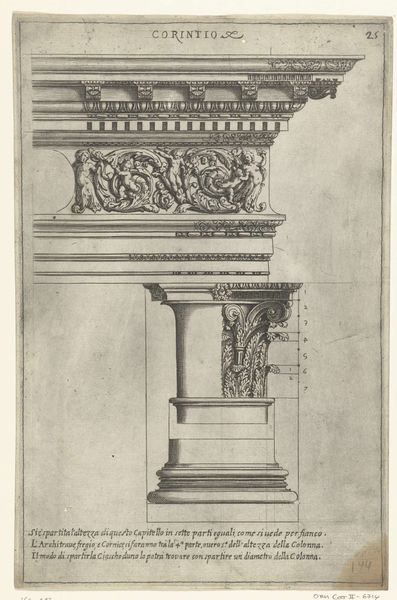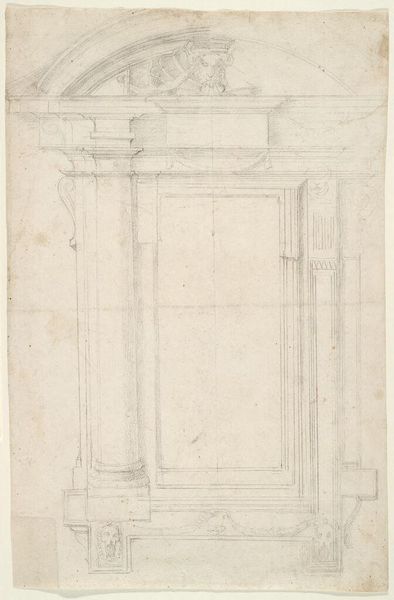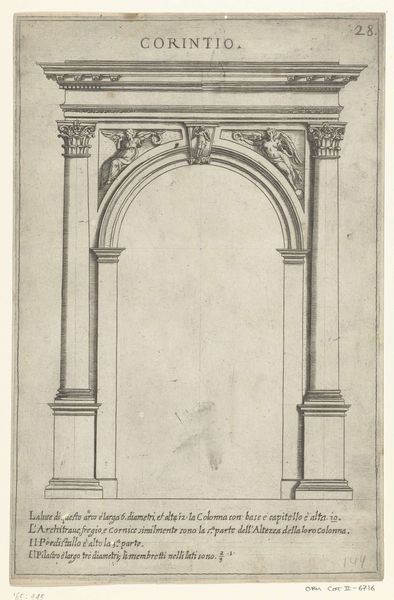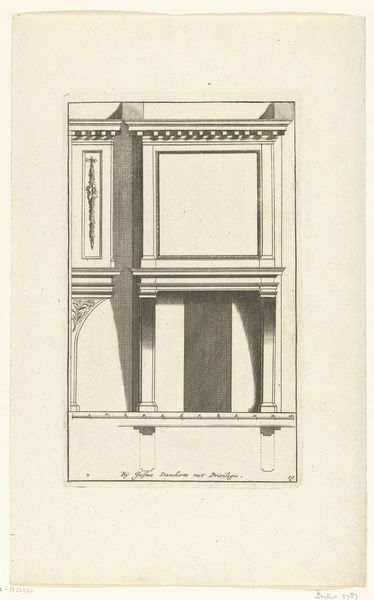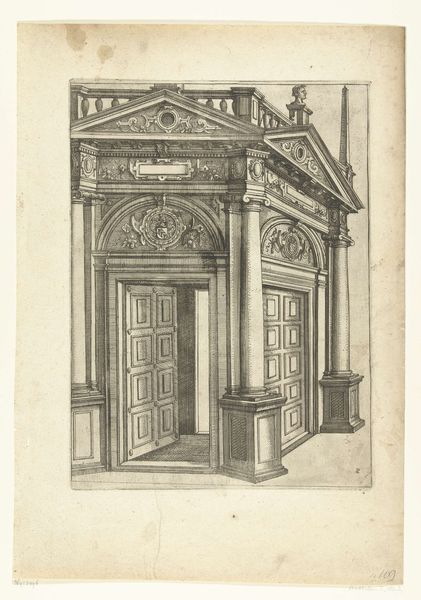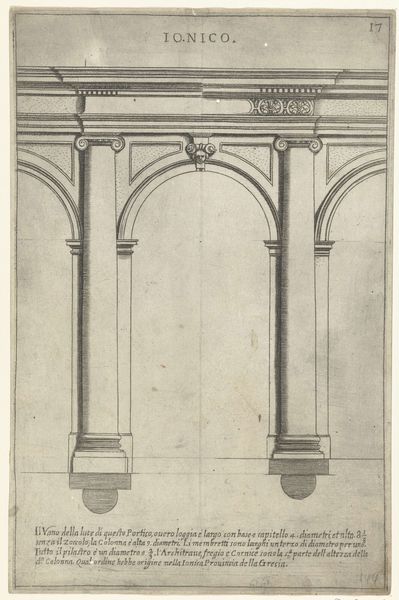
print, engraving, architecture
# print
#
classical-realism
#
perspective
#
form
#
geometric
#
classicism
#
line
#
italian-renaissance
#
engraving
#
architecture
Dimensions: height 128 mm, width 94 mm
Copyright: Rijks Museum: Open Domain
Curator: This is an engraving from sometime between 1500 and 1549, attributed to an anonymous artist, titled "Deel van een klassieke triomfboog," or "Part of a classical triumphal arch." Editor: Stark. The geometric exactness feels quite austere, almost cold, even though it's just a fragment. The materiality of the engraving, that precise line work, emphasizes the form itself. Curator: Absolutely. This work sits squarely within the Italian Renaissance and its fascination with classical forms. The triumphal arch was a powerful symbol of Roman imperial authority, so its revival here signifies a deliberate attempt to link contemporary rulers with that legacy. Editor: I'm intrigued by the production. Engraving demanded a certain skill set, a specific labor to render this idealized structure. I'd like to know more about who was making prints like these and for what audiences. Were they intended for other artists to use as templates? Curator: Possibly. Prints like this served multiple functions. They were collected by connoisseurs, but they also circulated as models for other artists and architects. This particular print could have influenced the design of buildings or served as a record of existing classical structures. The printing press democratized access to classical imagery. Editor: Democratization… to an extent. Remember that producing engravings, disseminating them, required significant capital and infrastructure. The materiality of the print speaks to the economic systems in place, to who controlled the means of production, to whom this 'classical' imagery was available. Curator: A valid point. It's important to consider how the rise of printmaking intersected with the socio-political dynamics of the era. These images both reflected and shaped the prevailing power structures and ideals. This piece speaks to the construction of authority, both architectural and social, within the Renaissance context. Editor: Exactly. Even a fragment, a "part," as the title states, can reveal a whole system of artistic labor and material constraints underpinning it. The triumphal arch only gets built, only exists because someone knows how to turn an idea into a material object. Curator: So it seems both the idealized form and the practical process were linked in spreading Renaissance ideals and in defining political imagery of the period. Editor: Indeed, a connection forged in the lines of the engraving itself.
Comments
No comments
Be the first to comment and join the conversation on the ultimate creative platform.

